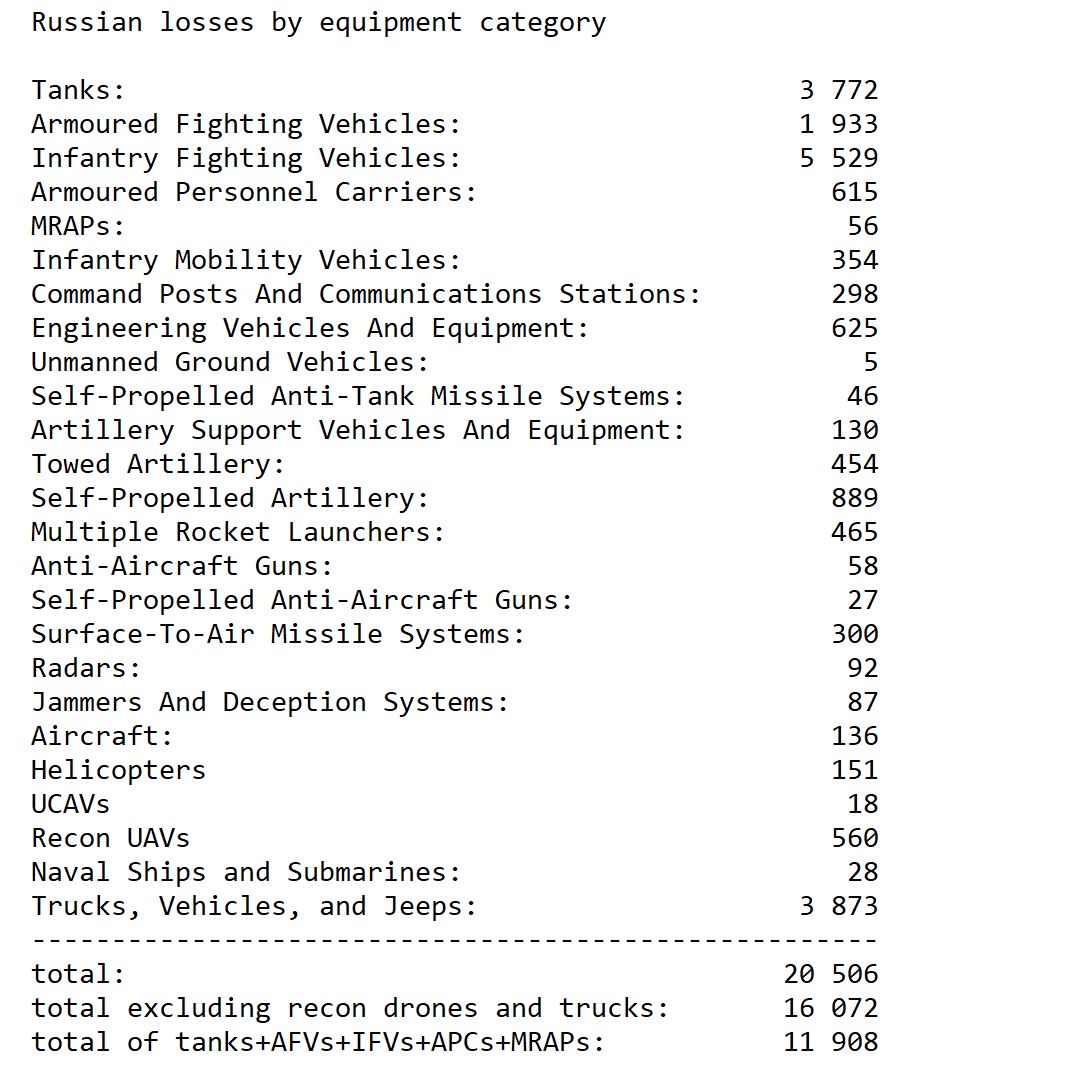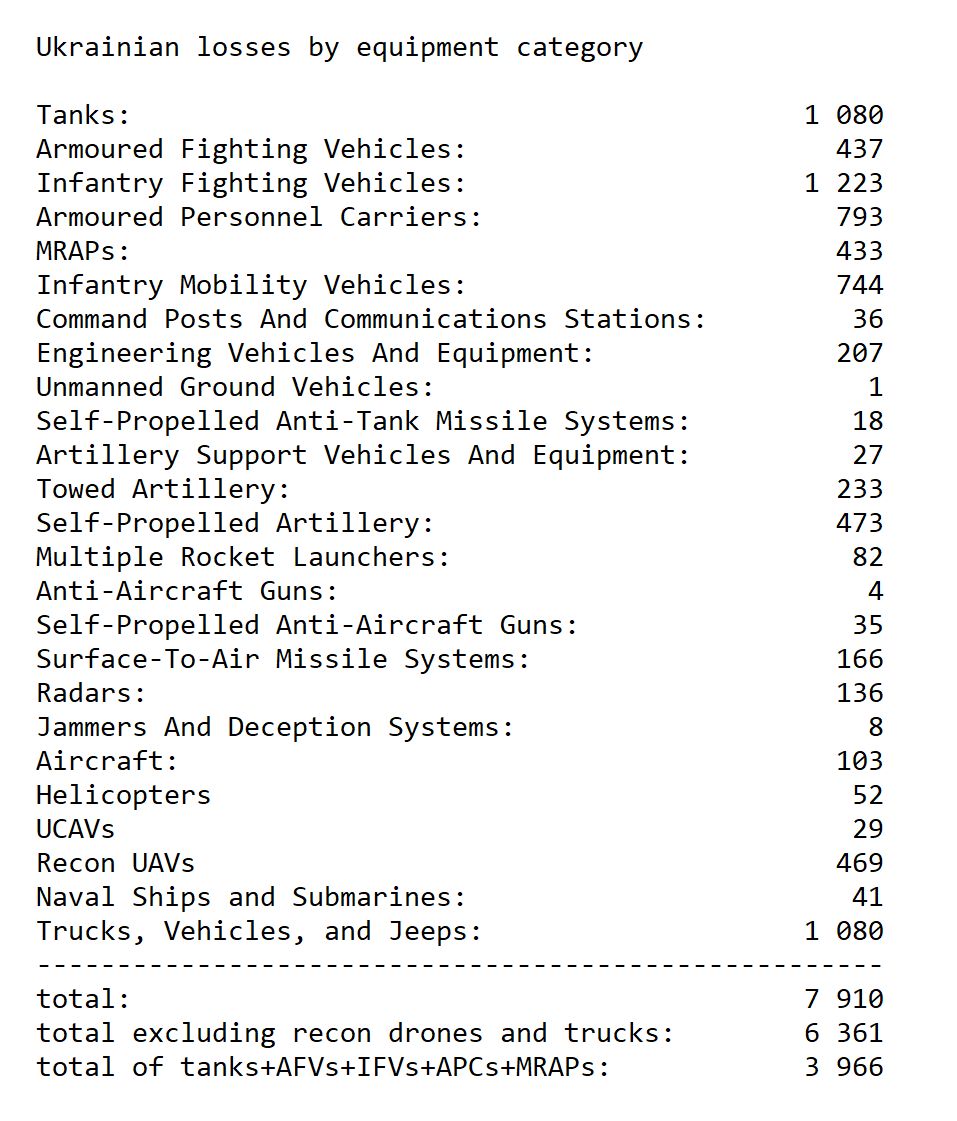/short thread with statistics for 3rd aniversary of the start of the war/
Russian and Ukrainian visually-confirmed equipment losses since the start of the Russian 2022 invasion of Ukraine by category
Full UA list: oryxspioenkop.com/2022/02/attack…
Full RU list: oryxspioenkop.com/2022/02/attack…

Russian and Ukrainian visually-confirmed equipment losses since the start of the Russian 2022 invasion of Ukraine by category
Full UA list: oryxspioenkop.com/2022/02/attack…
Full RU list: oryxspioenkop.com/2022/02/attack…


Huge thanks to all Oryx and @WarSpotting team members and everyone else who have been helping us (and the wider OSINT community) collect and analyze the evidence of equipment losses.
Special credit to the Ukrainian military for thier epic performance on the battlefield :)
Special credit to the Ukrainian military for thier epic performance on the battlefield :)
• • •
Missing some Tweet in this thread? You can try to
force a refresh












